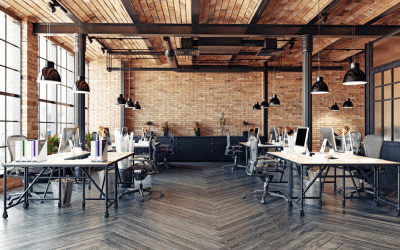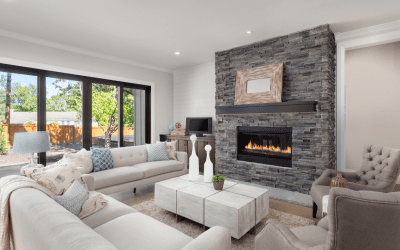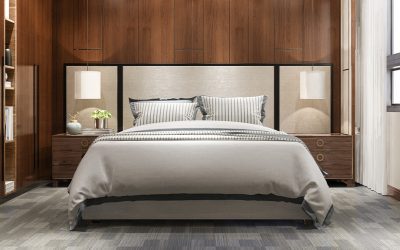The Impact of Color Psychology Interior Design
Introduction
Color is a powerful tool that can greatly impact our emotions, moods, and perceptions. In the world of interior design, understanding color psychology and its effects can help create spaces that are not only visually appealing but also conducive to the desired atmosphere. This article explores the influence of color psychology interior design and provides tips and tricks for incorporating colors effectively.
Understanding Color Psychology
The Basics of Color Psychology
Color psychology interior design is the study of how different colors affect human behavior and emotions. Each color carries its own unique symbolism and can evoke specific feelings and associations. Understanding the basics of color psychology is essential for effectively using colors in interior design.
The Psychological Effects of Different Colors
Different colors have distinct psychological effects. For example:
- Red according to the color psychology interior design signifies energy, passion, and can stimulate appetite. It can be a great choice for dining areas or spaces where you want to create a sense of excitement.
- Blue is associated with calmness, tranquility, and trust. It works well in bedrooms or areas where relaxation is desired.
- Yellow represents happiness, optimism, and warmth. It can be used to brighten up spaces and create a welcoming atmosphere.
- Green symbolizes nature, balance, and harmony. It is often used in spaces where a sense of peace and renewal is desired.
- Purple according to the color psychology interior design conveys luxury, creativity, and spirituality. It can be used to add a touch of elegance or to create a cozy and intimate ambiance.

Applying Color Psychology Interior Design
Choosing a Color Scheme
When designing a space, it’s important to select a color scheme that aligns with the desired mood and purpose. By considering the principles of color psychology interior design, you can strategically choose between Monochromatic, complementary, or analogous color schemes can be employed based on the atmosphere you want to create.
Creating the Right Mood
Different rooms serve different purposes, and by considering color psychology interior design, colors can help enhance the desired mood. For example, vibrant and energetic colors might work well in social areas such as living rooms or playrooms, while calming and soothing colors are more suitable for bedrooms or meditation spaces.
Using Color to Highlight Architectural Features
Colors, when employed strategically with an understanding of color psychology interior design can be used to highlight architectural features or elements within a space. For instance, using a contrasting color on an accent wall can draw attention to a fireplace or an interesting architectural detail.

Incorporating Colors in Different Rooms
Each room in a home has its own purpose and ambiance and by applying color psychology interior design, incorporating colors appropriately can enhance the overall design. Here are some suggestions for using color in different rooms:
- Living Room: Consider using warm and inviting colors like earthy tones or shades of orange to create a cozy and welcoming atmosphere. You can also incorporate accent colors through accessories such as throw pillows or artwork.
- Kitchen: Bright and vibrant colors like shades of yellow or green can stimulate appetite and create a lively atmosphere in the kitchen. Additionally, using white or light colors for kitchen cabinets and countertops can make the space feel clean and spacious.
- Bedroom: Opt for calming and soothing colors such as shades of blue or lavender to promote relaxation and better sleep. Soft and muted tones can create a tranquil environment while incorporating textures and patterns can add visual interest.
- Home Office: Consider using colors that promote focus and productivity, such as shades of green or blue. These colors can help create a calm and conducive work environment. Additionally, adding pops of energizing colors like yellow or red can stimulate creativity.
- Bathroom: Light and neutral colors like white, cream, or light gray are commonly used in bathrooms to create a clean and refreshing atmosphere. You can also add splashes of color through accessories such as towels or shower curtains.

Tips and Tricks for Using Color Psychology Interior Design
Now that we have explored the basics of color psychology interior design and how to apply it in interior design, here are some tips and tricks to effectively use color in your spaces:
- Start with a Neutral Base: Using neutral colors as a base allows for flexibility and versatility in the overall design. Neutral walls and furniture provide a backdrop for adding pops of color through accessories or accent pieces.
- Experiment with Accent Colors: Incorporating accent colors can add personality and visual interest to a space. Consider using vibrant colors in small doses through throw pillows, rugs, artwork, or curtains.
- Consider the Natural Light: Natural light can significantly impact how colors appear in a space. Take into account the direction and intensity of sunlight when choosing colors, as they can look different under various lighting conditions.
- Pay Attention to Color Flow: Maintain a cohesive flow throughout your home by considering how colors transition from one room to another. Choose a color palette that harmonizes with adjacent spaces to create a sense of continuity.
- Balance Bold and Subtle Colors: Experiment with a balance of bold and subtle colors to create a visually appealing and well-balanced design. Use bold colors as accents or focal points, while incorporating softer shades for larger surfaces.
Conclusion
Color psychology plays a significant role in interior design, influencing our emotions and perceptions of a space. By understanding the basics of color psychology interior design and applying it effectively, you can create harmonious and visually captivating interiors. Remember to choose colors that align with the desired mood and purpose of each room, and don’t be afraid to experiment with different color combinations to achieve the desired effect.
FAQs
- How does color affect our mood?
Colors have the power to evoke specific emotions and moods. Warm colors like red or orange can create a sense of energy and excitement, while cool colors like blue or green can promote calmness and relaxation.
- Which colors work best in small spaces?
Lighter and neutral colors tend to make small spaces appear larger and more open. Colors like white, cream, or pastel shades can help create an illusion of space and brightness.
- Can I mix different colors in one room?
Yes, mixing different colors can add depth and visual interest to a room. Just make sure to maintain a cohesive color scheme by choosing colors that complement each other and create a harmonious balance.
- Should I follow color trends in interior design?
While color trends can provide inspiration and guidance, it’s not necessary to strictly adhere to them. Trends come and go, and what’s popular today may become outdated tomorrow. Instead, focus on creating a space that reflects your personal style and preferences. Choose colors that resonate with you and create an environment that makes you feel comfortable and happy.
- How do I choose the right color for my bedroom?
When selecting a color for your bedroom, consider the mood and atmosphere you want to create. Soft and soothing colors like blues, greens, or pastels are often preferred for bedrooms as they promote relaxation and better sleep. However, personal preference and individual taste should also play a role in your decision. Experiment with different colors and shades to find the one that brings you a sense of peace and tranquility.




0 Comments